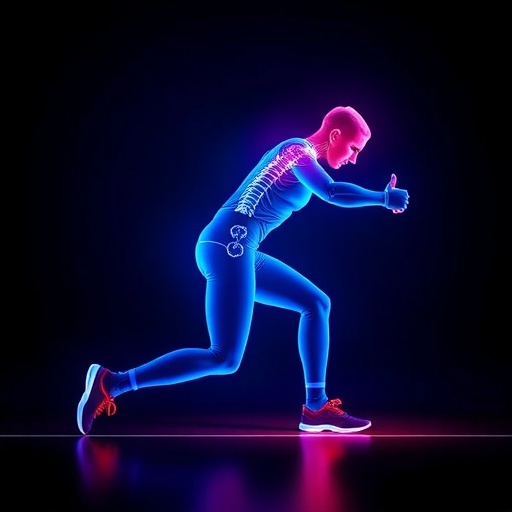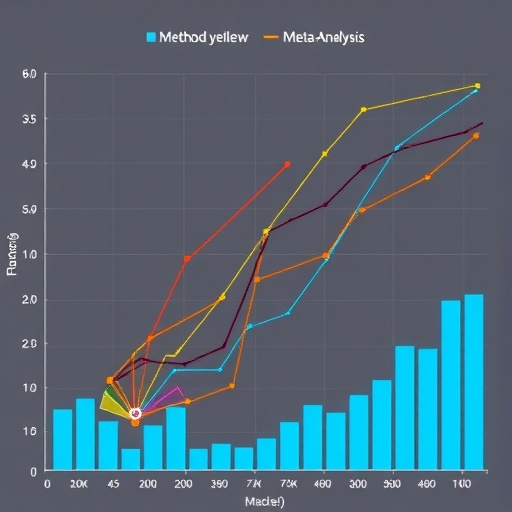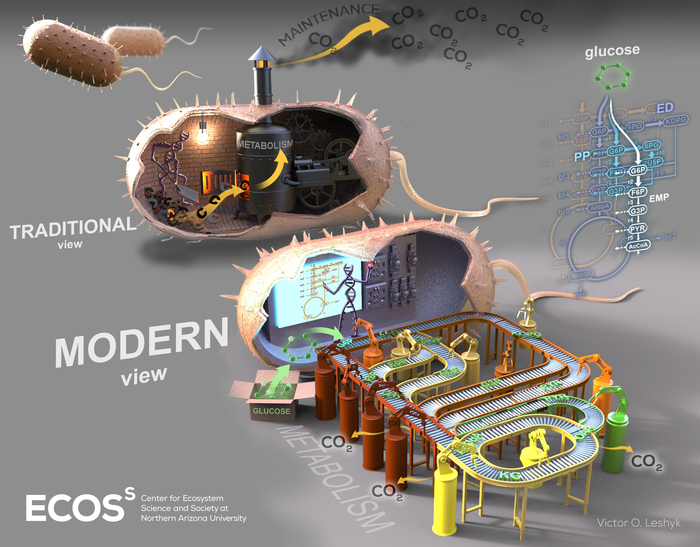In the evolving landscape of stroke rehabilitation, groundbreaking research has illuminated a novel pathway by which physical exercise exerts its therapeutic effects on brain recovery. A recent study published in Nature Communications reveals that exercise facilitates post-stroke recovery by mitigating neuronal hyperexcitability through the signaling pathway mediated by interleukin-10 (IL-10). This discovery not only advances our understanding of the molecular and cellular mechanisms underlying stroke recovery but also opens promising avenues for the optimization of rehabilitation strategies, anchoring exercise as a pivotal intervention in neurorestorative medicine.
Stroke remains a leading cause of long-term disability worldwide, primarily due to the extensive neuronal damage and altered neurophysiological states it precipitates. One hallmark of surviving neurons post-stroke is hyperexcitability—an increased tendency for neurons to fire action potentials excessively, which disrupts neural circuit function and impedes recovery. The pathological hyperexcitability culminates in heightened neural stress, maladaptive plasticity, and can trigger secondary damage processes. Thus, identifying mechanisms through which this hyperexcitability can be curtailed represents a critical therapeutic goal.
The study delves into the intricate interplay between exercise-induced biological signals and neuronal activity regulation. Researchers utilized a multifaceted approach combining behavioral analysis, electrophysiology, molecular biology, and advanced imaging to dissect how physical activity influences the post-stroke brain microenvironment. Central to the findings is IL-10, an anti-inflammatory cytokine traditionally known for its role in regulating immune responses. The investigation reveals a pivotal role for IL-10 in balancing neuronal excitability dynamics, ultimately fostering an environment conducive to functional recovery.
Experimentally, the team demonstrated that post-stroke exercise led to a significant upregulation of IL-10 expression in the affected brain regions. This cytokine increase correlated with a marked reduction in markers of neuronal hyperexcitability. Through precise patch-clamp recordings from cortical neurons in animal stroke models, a clear attenuation of excitatory postsynaptic potentials and firing rates was documented following a regimented exercise regimen. Such electrophysiological evidence substantiates the hypothesis that IL-10 signaling dampens aberrant neuronal activity post-injury.
Mechanistically, IL-10 was shown to engage pathways that modulate ion channel expression and synaptic receptor composition. The cytokine’s interaction with its receptors on neurons initiated intracellular cascades that downregulated voltage-gated sodium and calcium channels, key mediators of neuronal excitability. In tandem, IL-10 influenced the balance between excitatory and inhibitory synaptic inputs by promoting the expression of inhibitory GABAergic receptors and reducing glutamatergic receptor activity. This comprehensive molecular reshaping underscored a shift toward neuroprotection and circuit stabilization.
Intriguingly, the study also parsed the temporal aspects of the exercise-induced IL-10 signaling. It emerged that early initiation of physical activity post-stroke was critical to maximize the cytokine’s beneficial effects. Delayed exercise failed to replicate the reductions in hyperexcitability, indicating a sensitive therapeutic window during which rehabilitation strategies leveraging exercise can be most effective. This temporal specificity adds a valuable dimension to clinical translation, emphasizing timely intervention.
The research further expands on the cellular sources of IL-10 within the post-stroke brain milieu. While peripheral immune cells are established producers, the study identifies microglia—the brain’s resident immune cells—as significant contributors to IL-10 secretion in response to exercise. Activated microglia transitioned toward an anti-inflammatory phenotype, modulated by physical activity, which enhanced IL-10 production. This phenotypic plasticity underscores the adaptive capacity of glial cells in response to behavioral interventions and their role in neuroimmune crosstalk.
Beyond microglia, neurons themselves exhibited sensitivity to IL-10’s regulatory effects. Receptor expression studies indicated that neuronal populations in peri-infarct zones displayed increased IL-10 receptor expression post-exercise, rendering them responsive to the cytokine. This autocrine/paracrine signaling loop delineates a refined and direct means by which IL-10 exerts neuromodulatory effects, bridging immune signaling and neuronal function at the cellular level.
The translational implications of these findings are profound. Given that exercise is a low-cost, widely accessible intervention, delineating the molecular underpinnings empowers clinicians and researchers to design optimized rehabilitation protocols. Furthermore, the identification of IL-10 signaling as a core mediator invites the exploration of pharmacological agents that can mimic or augment cytokine effects, potentially benefiting patients who are unable to engage in physical exercise due to severity or comorbidities.
Moreover, the study encourages a reassessment of post-stroke therapeutic windows and rehabilitation intensity, proposing integrative approaches that combine physical activity with immunomodulatory treatments. Such synergistic regimens may accelerate neuronal recovery, reduce secondary complications, and enhance long-term functional outcomes. The implication that modulation of neuroinflammation via IL-10 can recalibrate neural circuit excitability extends beyond stroke to other neurological disorders characterized by excitotoxicity and inflammation.
From a broader neurobiological perspective, this research enriches the conceptual framework linking lifestyle factors with neuroimmune interactions. The notion that exercise reshapes the brain’s cytokine milieu to promote stability and recovery exemplifies the dynamic bidirectional communication between systemic physiological states and central nervous system health. It invites further investigation into exercise-induced molecular signatures and their relevance across neurodegenerative and psychiatric disorders.
Additionally, the use of cutting-edge methodologies including single-cell transcriptomics, in vivo calcium imaging, and optogenetics in this study’s design provides robust validation of the findings. These techniques allowed for unparalleled resolution in mapping IL-10’s spatial and temporal effects within complex neural networks. This methodological rigor strengthens the translational potential and paves the way for future research integrating molecular and systems neuroscience to dissect recovery processes in the injured brain.
The study also highlights the importance of early neuroimmune modulation following neurological insults. By focusing on the anti-inflammatory cytokine IL-10, the research aligns with emerging paradigms emphasizing a balanced inflammatory response crucial to maintaining neuroplasticity and preventing detrimental excitotoxic cascades. These insights challenge previous perceptions that viewed inflammation solely as a deleterious post-stroke phenomenon, underscoring its nuanced role dictated by timing and cellular context.
Furthermore, the detailed characterization of IL-10’s downstream intracellular signaling pathways suggests potential molecular targets for drug development. These include the STAT3 pathway, known for its involvement in anti-inflammatory responses and neuroprotection, as well as modulation of ion channel gene expression. Targeting these pathways may provide novel avenues for enhancing neuronal resilience and functional recovery, marking a paradigm shift in neurorehabilitation pharmacotherapy.
In summary, the revelation that exercise mitigates neuronal hyperexcitability through IL-10 signaling establishes a critical mechanistic link between physical activity and neuroimmune regulation in post-stroke recovery. The study offers a comprehensive, multi-scale understanding of how biological responses to exercise can recalibrate dysfunctional neural circuits, emphasizing the integration of immune signaling and neuronal function. This work not only delineates a compelling pathway for therapeutic intervention but also underscores the transformative potential of exercise as a cornerstone of neurorehabilitative care.
As the global burden of stroke continues to rise, innovations such as these provide hope for improved recovery trajectories. By harnessing the body’s endogenous repair mechanisms—amplified through accessible lifestyle modifications like exercise—clinicians can empower patients to regain autonomy and quality of life. This research heralds a new era where molecular neuroscience and rehabilitative medicine converge, redefining our approach to neurological recovery.
Subject of Research: Neurobiology of stroke recovery, neuronal excitability, and neuroimmune signaling
Article Title: Exercise facilitates post-stroke recovery through mitigation of neuronal hyperexcitability via interleukin-10 signaling
Article References:
Schmidt-Pogoda, A., Ruck, T., Strecker, J. et al. Exercise facilitates post-stroke recovery through mitigation of neuronal hyperexcitability via interleukin-10 signaling. Nat Commun 16, 8928 (2025). https://doi.org/10.1038/s41467-025-62631-y
Image Credits: AI Generated
Tags: advanced imaging in neuroscience researchexercise therapy for stroke recoveryIL-10 signaling pathwaylong-term disability after strokemaladaptive plasticity in strokemolecular mechanisms of stroke recoveryneuronal activity regulation in recoveryneuronal hyperexcitability managementneurorestorative medicine strategiesphysical activity impact on brain healthrehabilitation optimization techniquesstroke rehabilitation






